What makes a bicycle more than just a machine with two wheels and a frame?
The defining factor is a system of very complex components, all working together harmoniously in a way that simple pedalling could not pull off.
Out of all these intricate component parts, the derailleur is one innovation that puts the rest to shame.
Without it, your bike would just sit in one gear, making you huff and puff up hills or spin through flat areas.
The derailleur is engineered in a way to make everything from the oldest vintage bicycles to the e-cycle technology from EMotorad smooth, effective, and fun.
So gear up, literally put on your best gear, to penetrate the subtle dimension of this unsung hero.
Cycle Derailleur: Function of Derailleurs in Bicycles and E-cycles
In simpler terms, the derailleur is the mechanical machinery used to help transition between gears on your bike. It is a smart little implement that makes pedalling comfortable on every terrain.
With no other means besides it, you'd be stuck in one gear.
The hills would become more Herculean-like to conquer, and, of course, the plains would be awfully boring.
For those reasons, it is the derailleur that gives your biking most of the versatility and ease.
So, why should you care? Because it’s not just about making pedalling easier; it’s about improving your entire cycling experience.
Be it a regular bike or an electric one, the derailleur ensures you continue riding at its finest.
How Does a Derailleur Work?
Now, let’s get down to the science-y part of this fascinating little machinery.
The various components of a derailleur are:
- The Cage: The component that effectively pushes the chain from one gear to another
- The Spring: It keeps the chain taut and helps it return to its original position in the cage
- Jockey Wheels: They are there to smoothly guide the chain over the gears
- Limit Screws: If the derailleur tries to take the chain too far in either direction, these screws keep it from doing this
- Cable: Your gear shifter is connected to the derailleur, helping you control it
When you turn your shifter to a gear, the cable pulls or slackens while the derailleur moves. The cage pushes the chain to another cog or chainring, shifting to a new gear. This leads to effortless climbing and descending while using power more efficiently.
Derailleurs in Traditional Bicycles
Derailleurs are indeed mechanical marvels for those traditional bicycles. It entirely relies on the rider to shift gears.
You might have also heard of a front derailleur (that shifts through the chainring), as well as a rear derailleur (for the cassette located at the very back).
They form, together, a splendidly harmonious system to challenge the various terrains with good control.
Thus, traditional derailleurs shine in their simplicity and reliability. They only require regular maintenance to keep themselves in good standing.
Regular washing, good lubrication, and fine-tuning are a derailleur necessity to avoid frustrating misfires or chain drops.
Derailleurs in E-Cycles: The Modern Twist
Speaking of bikes, e-cycles are the coolest thing around town.
Brands like EMotorad inspire us to commute, travel, and enjoy Mother Nature on two wheels.
Anyway, what's the use of a derailleur here? Isn't the motor doing quite a lot by itself, you ask?
No!
The motor only assists you in pedalling or gives the bike a full throttle if you want. The derailleur, however, gives you an extra stimulus to harness that power.
It's done like this:
- Enhanced Efficiency: By changing gears, you can use the motor energy more productively, using the charge more effectively, and providing higher performance
- Better Control: The difference is clearly seen when you’re going up big hills or traversing bumpy trails using proper gear.
- Smoother Transitions: Advanced derailleur systems are also present in e-cycles because they can handle much more than the regular speed or torque increase
Some e-cycles even feature automatic shifting using electronic derailleurs, taking the guesswork out of gear changes. The system allows you to intuitively adjust to terrain issues while you enjoy your ride.
Now, that's futuristic!
Common Issues and How to Fix Them
Undoubtedly, all superheroes have their share of vulnerabilities.
Derailleurs, too, have their own issues, although they stand head and shoulders above the rest.
Here are some common issues and quick fixes:
1. Misaligned Derailleur: This problem is characterised by the fact that when one tries to shift, the derailleur may fail or make noise.
So how can that be rectified?
It can be solved with a slight adjustment of the two screws that limit the derailleur's movement, straightening out the alignment.
2. Stiff Cable: This results in problematic or hard shifting.
How can you repair it?
Basically, you would have to change the cable or lube it to make it more flexible.
3. Bent Hanger: If the derailleur seems off, then maybe the problem runs in this area.
What should you do next?
You can either straighten or replace the derailleur hanger.
4. Dirty Components: Collected grease could disturb the performance.
The only solution here is to regularly clean these components.
If you’re riding an e-cycle, always check the manual or consult the manufacturer (hello, EMotorad!) for specific maintenance tips.
Choosing the Right Derailleur
What kind of derailleur you need is all based on your cycle type and riding style:
- Road Bikes: Surprisingly smooth and precise derailleurs designed for speed work best in this case
- Mountain Bikes: Use powerful types that can handle demanding off-road riding paths
- E-cycles: Locate compatible derailleurs for an increased torque and electronic system
Industry leaders, in this regard, are offering loads of options to everyone.
EMotorad offers top-of-the-market e-cycle options with advanced derailleurs to keep you on track.
Types of Rear Derailleurs
Not all derailleurs are built the same, and choosing the right one depends a lot on your bike’s setup and the kind of riding you do.
- Short Cage Derailleur: Ideal for road bikes with tightly spaced gears. They’re compact, lightweight, and offer quicker gear changes for speed-focused riders.
- Medium Cage Derailleur: For bikes with a broader gear range—like gravel or touring cycles, this one is great. It balances speed and gear coverage.
- Long Cage Derailleur: Mostly found on mountain bikes or bikes with triple chainrings. These handle a much wider range of gears, making them perfect for steep climbs and varied terrain.
Understanding these types makes it easier to pick a derailleur that matches your bike’s drivetrain and your style of riding.
Compatibility: It’s More Than Just the Fit
You can’t just pick a derailleur and slap it on your bike—it needs to work smoothly with your shifters and cassette. Here’s what you need to keep in mind:
- Brand Matching: Different brands (like Shimano, SRAM, and Campagnolo) use different pull ratios. That means a derailleur from one brand might not work well with a shifter from another.
- Speed Matching: The number of gears (or speeds) on your cassette must align with your derailleur’s design. A derailleur built for a 9-speed setup won't perform optimally on an 11-speed bike.
When in doubt, always stick with drivetrain components from the same group set or brand family.
What’s a Derailleur Clutch, and Why Does It Matter?
- Modern bikes—especially mountain bikes—often come with a derailleur that includes a clutch mechanism. Here's what it does:
- It keeps the chain under tension, which means less chain slap and fewer chances of the chain falling off.
- It's a game-changer for off-road riding, where rough terrain can make traditional derailleurs bounce too much.
- Clutch derailleurs are becoming more popular in gravel and trail bikes, too. If you ride rough, it’s a smart upgrade.
Going Electronic: The New Age of Shifting
Electronic shifting is no longer reserved for pro-level race bikes. More riders are embracing systems like Shimano Di2, SRAM eTap, or Campagnolo EPS.
Here’s why:
- No cables = fewer mechanical issues.
- Faster, more precise shifts.
- Customisable setups that adapt to how you ride.
Plus, electronic derailleurs pair well with e-cycles and modern tech-friendly builds. It’s not just about luxury—it’s about convenience and performance too.
Keeping It Running Smooth: Derailleur Maintenance Tips
To keep your derailleur shifting like butter, a little care goes a long way. Here’s what you should be doing:
- Clean it regularly: Wipe away dirt and grime, especially after dusty or muddy rides.
- Lubricate moving parts: Keep the jockey wheels, pivot points, and spring mechanism properly lubricated.
- Inspect for damage: A bent hanger or worn cable can mess up your whole ride. Check and replace as needed.
A well-maintained derailleur doesn’t just work better—it lasts longer, too.
The Future of Derailleurs
With the advent of new technologies in cycling, derailleurs have also evolved.
We’re seeing exciting advancements like:
- Wireless Shifting: Say goodbye to cables with systems like SRAM’s eTap
- Smart Shifting: With GPS and terrain data for prognostic gear changes
- Durability: Harnessing technologies such as carbon fibre and titanium materials for lightweight and stronger parts.
For e-cycles, the future is even brighter. Imagine a derailleur that syncs with your motor and battery for unparalleled efficiency.
With visionaries like EMotoroad leading the charge, it’s no longer wishful thinking but rather a reality.
Wrapping It All Up
The bland derailleur may seem less visually appealing in your cycle when compared to your gear.
However, it plays an important role in the overall structure of your bicycle.
It guides and ensures smooth changes in traditional bikes and is set up to unlock the full potential of any electric bike. It is the ultimate multitasker.
Whether you’re a casual rider, a seasoned cyclist, or an e-bike enthusiast, understanding how this nifty mechanism works will only deepen your appreciation for your two-wheeled companion.
And if you’re considering an upgrade, why not check out the EMotorad range of e-cycles?
Combining state-of-the-art derailleur systems with elegant design and innovative technology, they are the perfect solution for someone who would like the best of both worlds.
So, the next time you set out to bike your way up a hill or thread your way through city streets, thank your poor, developed derailleur.
This is the little hero who makes the big adventures possible!


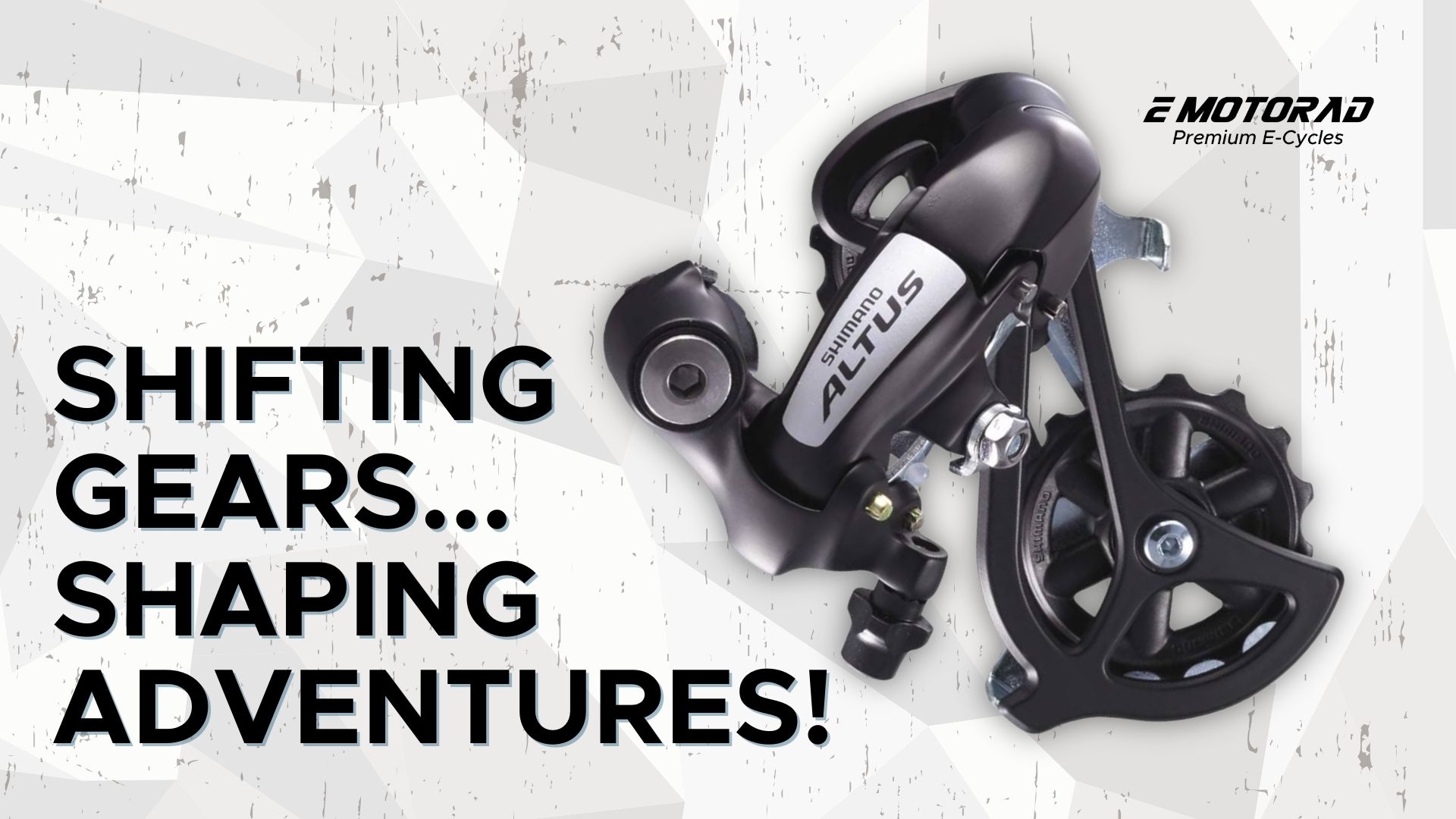
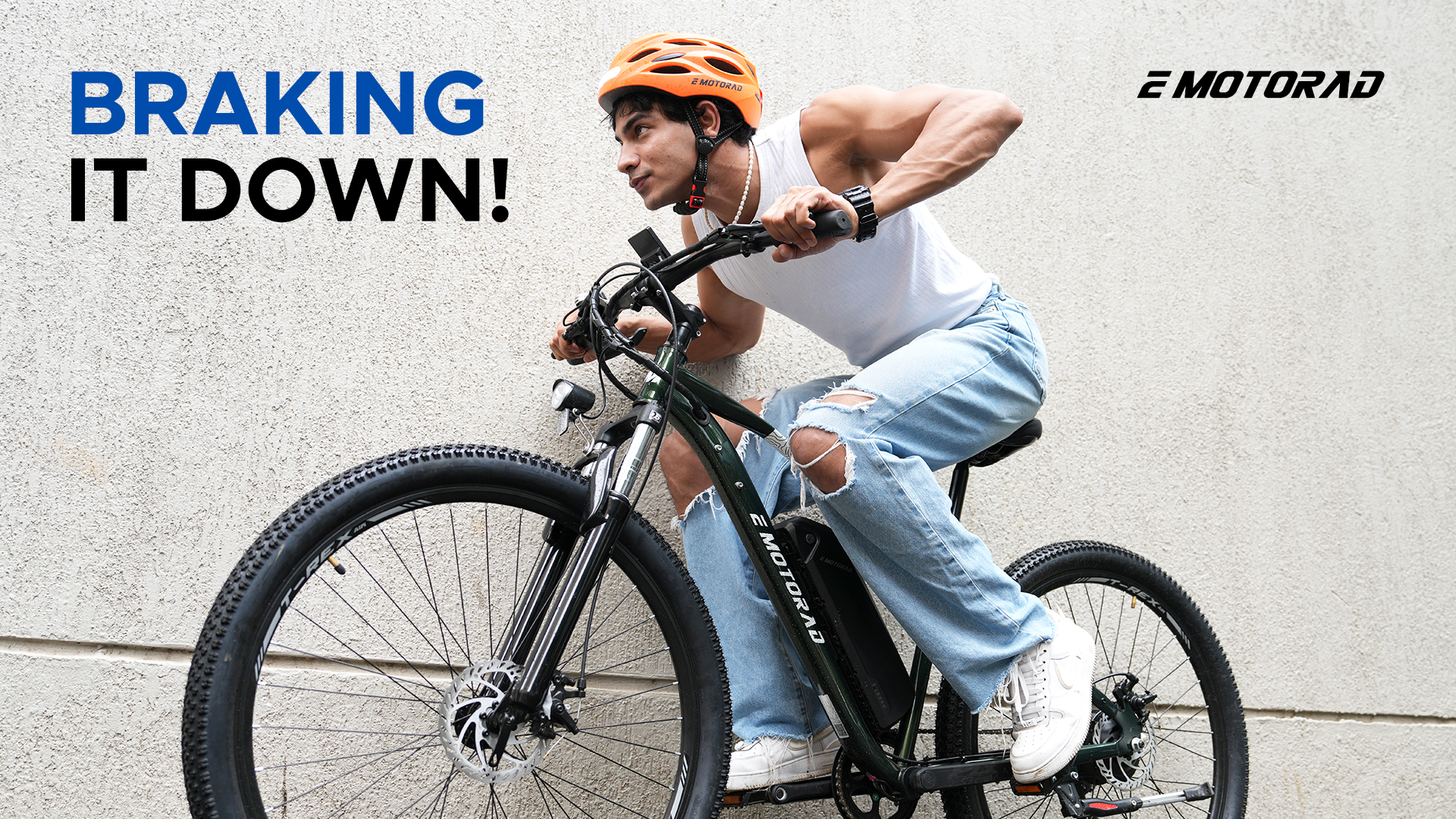
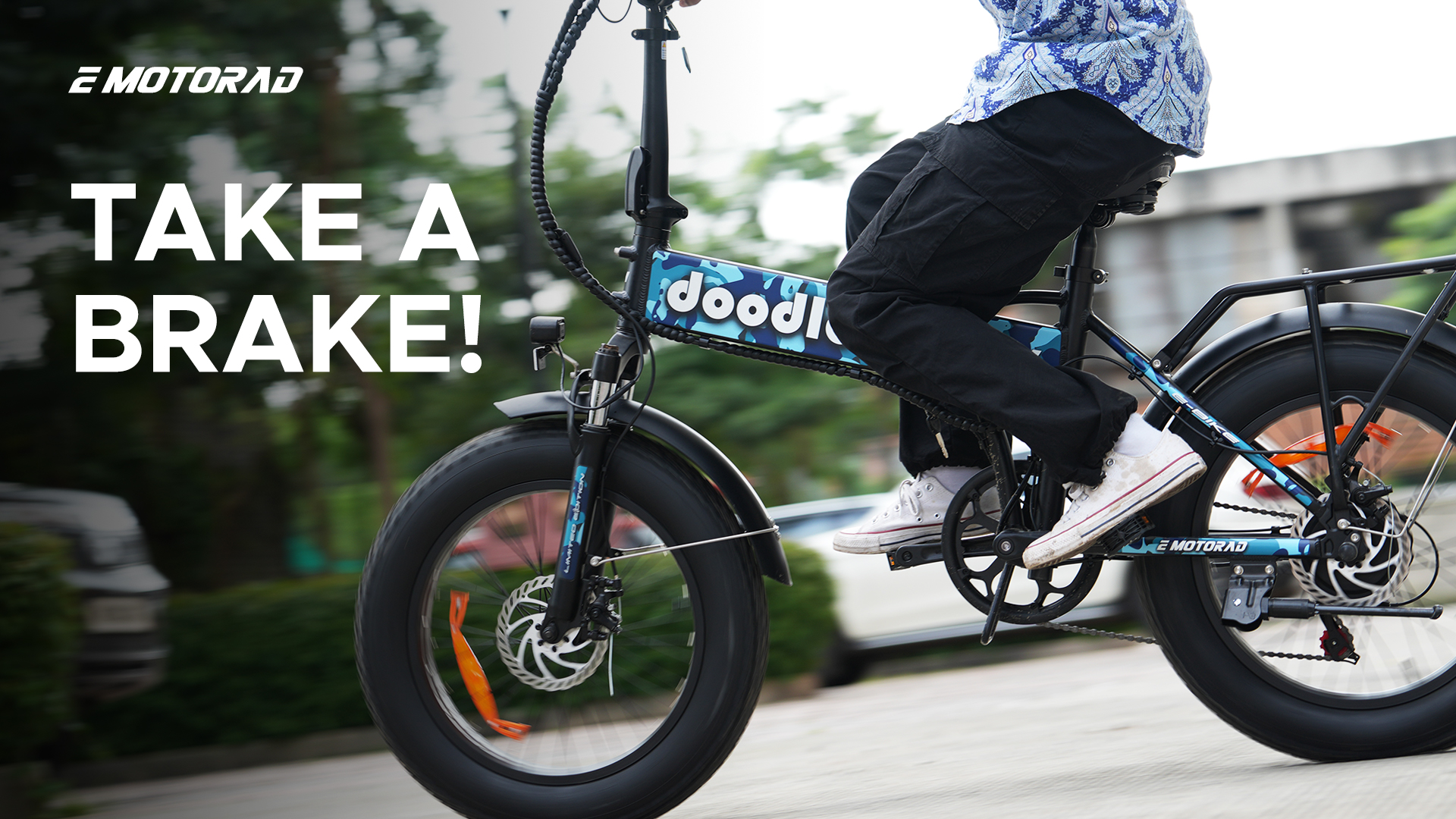
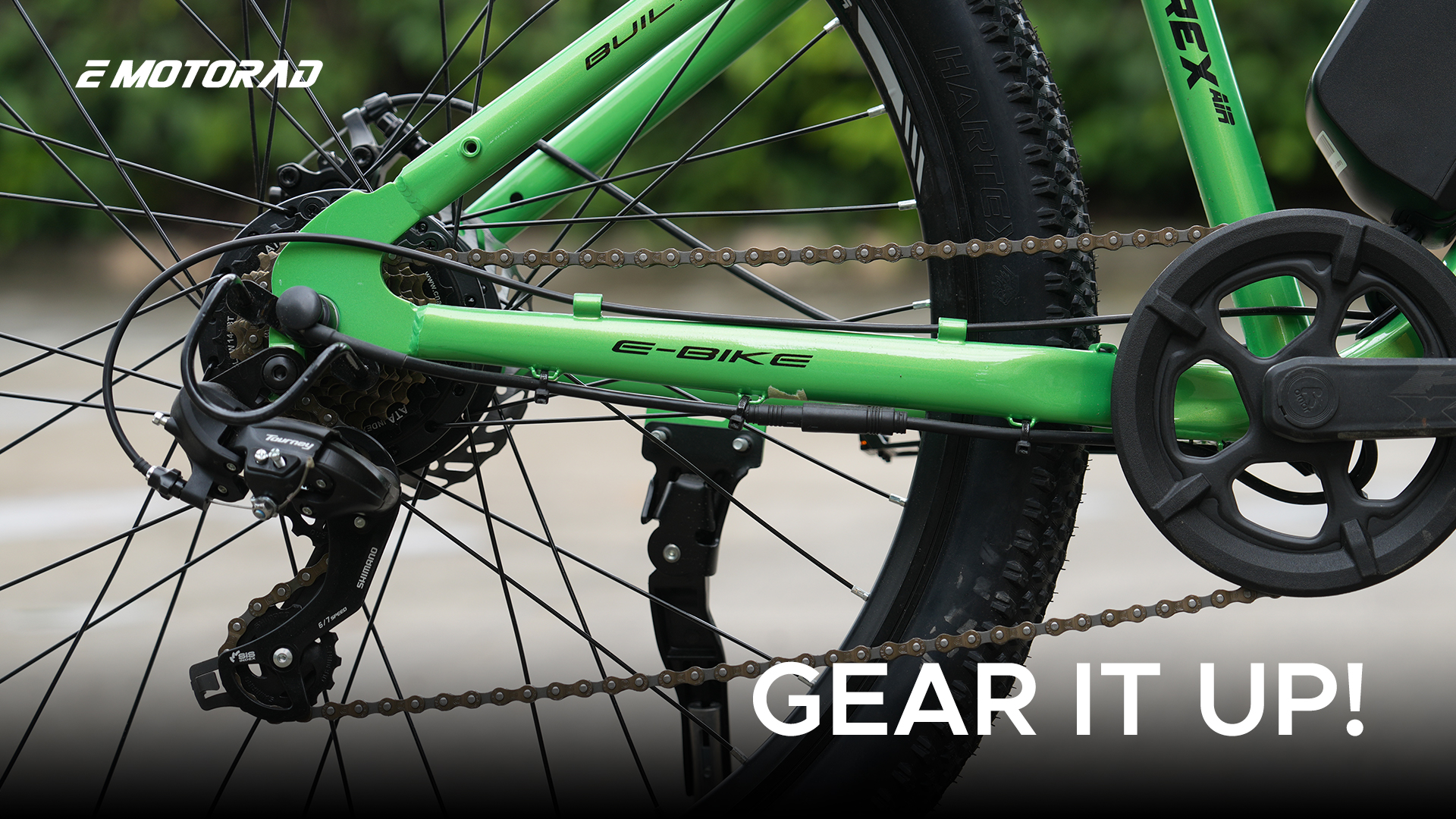
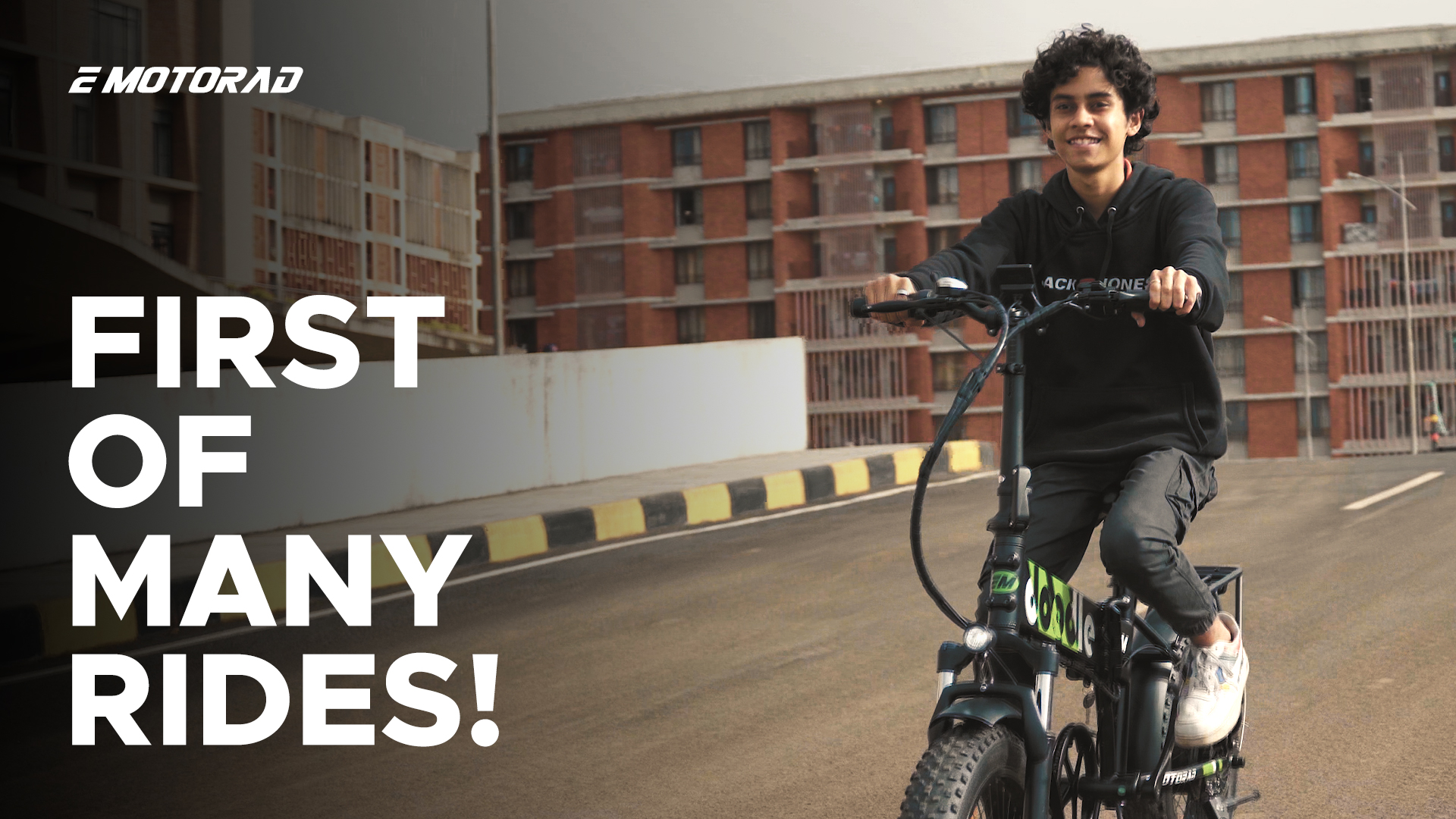

About Us
Blogs
News
EM Stories